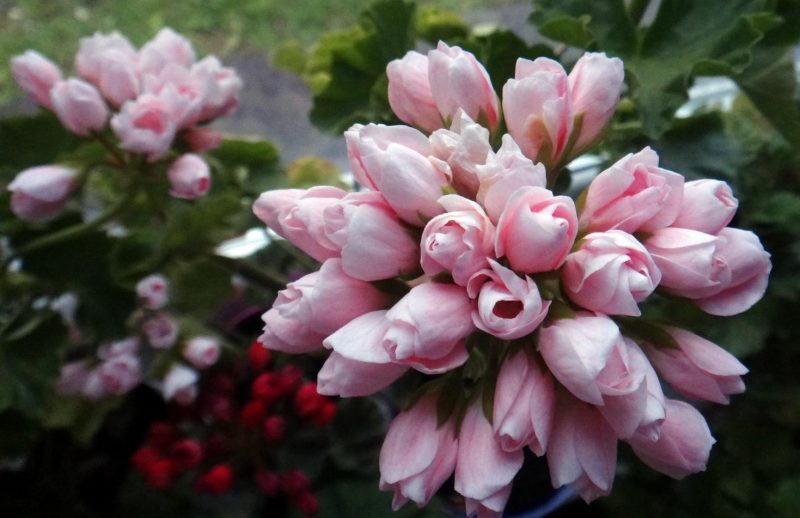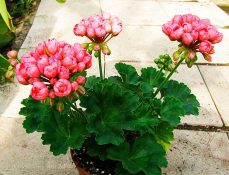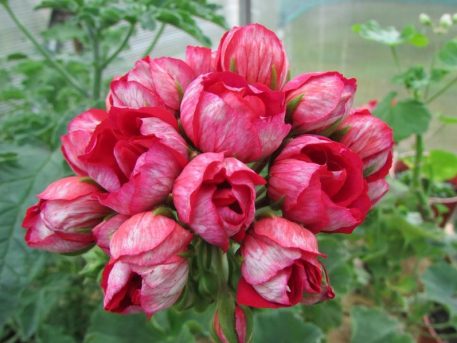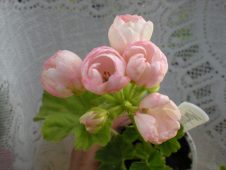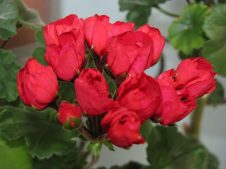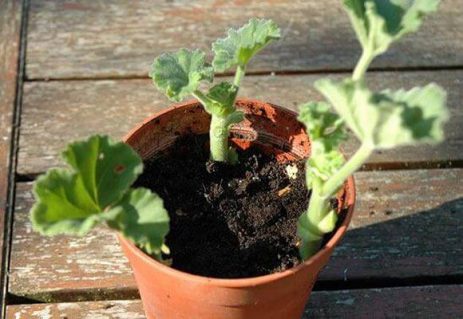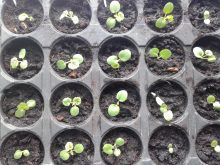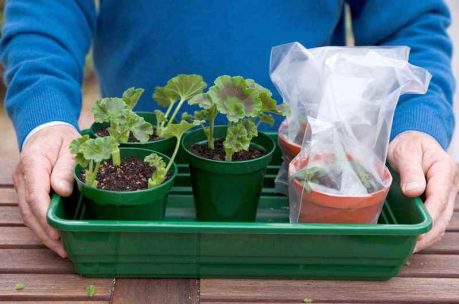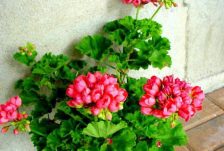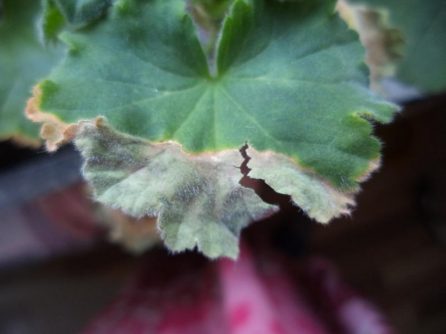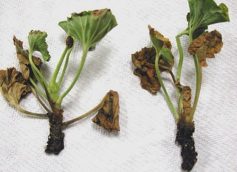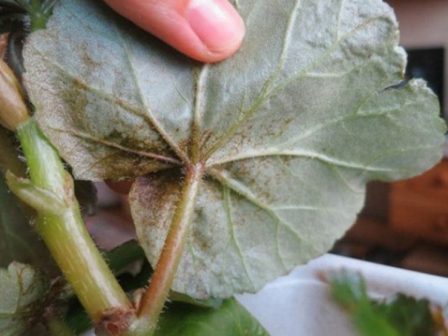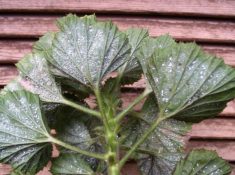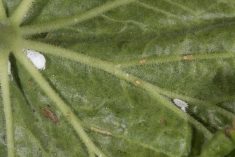Geranium is known to many gardeners who are fond of growing indoor plants. But for potted flowers, this is an erroneous name, since a species like Geranium is usually cultivated in the garden. As potted varieties of Pelargonium are used, a striking representative of which is tulip-shaped pelargonium.
Material Content:
Description of the type of pelargonium tulip
An unusual flower with inflorescences resembling small tulips is the result of a family nursery in Boston, USA. The variety is represented by plants with a height of 30 to 70 cm, depending on the variety, of which there are fourteen. Leaves covering upright shoots are glossy and sufficiently stiff.
The highest decorativeness is represented by tulip-shaped semi-double forms of buds, collected 50 pieces in lush inflorescences. Each shoot is crowned with one umbrella. The color is varied - from pale pink to burgundy shades. The flowers are characterized by dark or white veins on the outside of the petals.
Names of plant varieties
Among the most popular and spectacular varieties of pelargonium tulip-shaped stand out:
- "Carmen" is one of the first varieties of this type, characterized by a rich red tint of inflorescences.
- “Victoria” is a rather unpretentious plant with similar saturated colors. Carries moving to the street in the summer without any problems.
- “Marbaska Tulip” - a form with terry buds that look more like roses. During the flowering period, you can enjoy the view of creamy pink inflorescences that form on strong shoots.
- Pelargonium "Patricia" - this species is characterized by white stripes on the outside of the petals, which form semi-double inflorescences of red-pink color.
- “Lilian” is another variety that looks contrasting due to the red shades of bright inflorescences with dark green foliage.
- "Linea" is a medium-tall type that tolerates hot summer weather rather well. Distinctive parameters of a lilac plant with simple non-double buds, which in the amount of 15 pieces form dense inflorescences.
- Pelargonium pelargonium "Emma fran Bengtsbo" - a surprisingly elegant variety, represented by flowers with velvety foliage and creamy pink, slightly elongated buds collected in dense umbrellas.
On a note! Some varieties got their names in honor of the women of the Andrea family: Patricia, Carmen, Victoria, Lilian and Linea.
In addition, such forms as Red Pandora, Herma, Conny, Pink Pandora, Marie-Louise, Mrs Charles, Happy Birthday are bred.
Seed cultivation
The seed method of reproduction is very laborious and far from always allowing to maintain varietal qualities. Therefore, especially enthusiastic flower growers who like to experiment and engage in selection at home resort to it.
Important recommendations that will help in the propagation of pelargonium by the tulip-shaped generative method:
- First of all, pelargonium seeds are rubbed lightly with sandpaper, which improves their germination.
- After this procedure, the seed is immersed for 30 minutes in a growth stimulator, for a similar period of time - in a solution of manganese, and then placed in ordinary warm water for 3 hours.
- A soil mixture of turf, peat and sand is prepared in a ratio of 2: 1: 1.
- Pelargonium seeds are distributed in the soil at intervals of 5 cm.
- The container is covered with polyethylene to create a greenhouse effect.
- After 2 weeks, when the sprouts appear, the film is removed.
The formation of seedlings of two true leaves indicates that the seedlings can be planted in permanent pots.
It is interesting:planting and care of perennial chrysanthemums
Outdoor landing
Tulip-shaped geranium, as it is sometimes mistakenly called, is not cultivated in open ground under the agroclimatic conditions of the temperate continental climate. In order for the plant to please the eye with its luxurious flowering, it must be grown in a pot, which in warm weather can be transferred to fresh air (balcony, terrace). The main thing is not to leave the flower in the wind.
The optimum temperature regime depends on the season. In summer, pelargonium develops well at 21-26 ° C, and in winter it needs to maintain temperature values in the range of 14-16 ° C.
Pelargonium needs fertile and loose soil. The latter quality contributes to better aeration performance and water permeability. And it is also necessary to place a drainage layer on the bottom of the pot, which prevents stagnation of moisture in the roots. A mixture of peat, garden soil and sand in a ratio of 2: 2: 1 is used as a suitable substrate.
An ornamental plant does not like bright light, so do not install the pot on the southern window sills, where the leaves can suffer from burning sun rays. So that the shoots do not stretch out, in winter it is necessary to organize additional lighting from fluorescent lamps.
How to care for pelargonium
Pelargonium tulip-shaped, the care of which is not particularly difficult, can bloom for a long time and very plentifully.
To verify this, it is enough to carry out the following activities:
- watering - pelargonium is sensitive to both excess and lack of moisture. Therefore, when establishing an irrigation regime, it should be borne in mind that in summer it should be carried out every two days, but with the advent of winter, the frequency of irrigation is reduced to 1 time per week;
- fertilizers - for the full development and realization of the potential in the form of lush and continuous flowering, the plant needs regular top dressing. The composition of the latter depends on the phase of development.In spring, after pruning, it is advisable to feed pelargonium with nitrogen to get a lush bush. Next, phosphorus and potassium are introduced into the composition, which contribute to the formation of peduncles and buds. During the growing season, the frequency of top dressing is 2 times a month;
- humidity - since the plant grows well with relatively high humidity, you should not place the pot in the winter near heating appliances;
- transplantation - this should be done every 2 years;
- pinching and pruning - to form a neat bush, the shoots are systematically nipped. And also do not forget about spring pruning, when dried shoots are removed and old ones are shortened (up to 5 buds).
As you can see, caring for the tulip-shaped pelargonium will not take much effort.
Propagation Features
The most productive way of plant propagation is vegetative, in which cuttings are prepared at the end of summer. The latter is recommended to be placed in a glass of water, which is installed on a light windowsill. The composition of the fluid systematically changes to pure.
After root formation, planting material is planted in separate pots with a fertile and loose substrate. Prior to full acceleration, it is important to ensure the appropriate microclimate - good lighting, lack of drafts and heat.
Diseases and Pests
Like other plants, pelargonium can be affected by diseases and be affected by pests.
Among the diseases stand out:
- rust - when spots appear on the leaf plates, the damaged parts are removed, and the bush is treated with fungicide;
- gray rot - if a gray coating is noted on the shoots, it is recommended to remove the affected specimens;
- black leg - develops, as a rule, due to poor-quality seed material (it is better to get rid of diseased plants).
In addition to diseases whose development is caused by fungi, parts of the plant can be attacked by harmful insects:
- whitefly - signs of vital activity can be seen when examining pelargonium: yellowing and drying of the shoots;
- spider mite - with excessively dry air, the leaves are often attacked by this insect. As a result, subtle cobwebs are noted on the shoots;
- mealybug - sugary discharge on leaf blades is associated with the colonization of the green mass of the flower by the mealybug.
Read also:spider mite on indoor plants
To cope with pests, the flower should be treated with an insecticide solution according to the manufacturer's instructions on the packaging. Spraying must be carried out on the street, after protecting the soil under the plant with a film.
If tulip-shaped pelargonium is properly and systematically looked after, then it will instantly conquer with its amazing beauty, will become a permanent inhabitant of a house or apartment.


